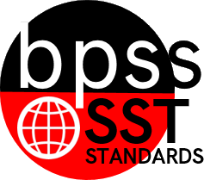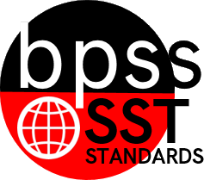3rd Grade Social Studies (Archived)
 BPS District Social Studies Standards Book
BPS District Social Studies Standards Book
SST-03 "I can ... statements"
1st Grade Social Studies
2nd Grade Social Studies
4th Grade Social Studies
5th Grade Social Studies
7th Grade Social Studies
8th Grade Social Studies
S |
|---|
SST-03.2.02
Student Learning Targets:Knowledge Targets
Reasoning Targets
Proficiency Rubric
ResourcesWebsites Helping Your Child With Social Studies
Vocabulary
| ||||||||||||||||||||||||||||||||||||||||
SST-03.3.01
Student Learning Targets:Reasoning Targets
Skills (Performance) Targets
Proficiency Rubric
ResourcesWebsites Helping Your Child With Social Studies
Vocabulary
| ||||||||||||||||||||||||||||||||||||||||
SST-03.3.02
SST-03.3.02 Explain how supply and demand affect personal economic choices (e.g., how scarcity forces people to decide which goods and services to obtain, what is given up in economic choices).Student Learning Targets:Knowledge Targets
Reasoning Targets
Skills (Performance) Targets
Product Targets
Proficiency ScaleThe Student ...(1) Beginning
(2) Developing
(3) Proficient
(4) Advanced
Resources | |
SST-03.3.03
SST-03.3.03 Explain the differences among natural and human resources, and how they are used locally.Student Learning Targets:Knowledge Targets
Reasoning Targets
Skills (Performance) Targets
Product Targets
Proficiency ScaleThe Student ...(1) Beginning
(2) Developing
(3) Proficient
(4) Advanced
Resources | |
SST-03.4
Narrative for the Government and CitizenshipThrough active learning experiences, third grade students gain knowledge and process information about their local community from a variety of resources. They identify important historical events, places, and persons from the past and make connections with their present community. Students explain what it means to be citizens of their community, state and nation; be able to identify the functions and major services provided by local governments; use a variety of resources to gather information about local, state and national governments; and demonstrate understanding of democratic principles and practices. Calculation Method for StandardsStandards are larger groups of related benchmarks. The Standard Grade is a calculation of all the related benchmarks. Click on the benchmark name below each Standard to access the learning targets and proficiency rubrics for each standard's related benchmarks. | |
SST-03.4.01
Student Learning Targets:Knowledge Targets
Proficiency Rubric
ResourcesWebsites Helping Your Child With Social Studies
Vocabulary
| ||||||||||||||||||||||||||||||||||||||||
SST-03.4.02
SST-03.4.02 Identify the three branches of local government (i.e., Executive, Legislative, Judicial).Student Learning Targets:Knowledge Targets
Reasoning Targets
Skills (Performance) Targets
Product Targets
Proficiency ScaleThe Student ...(1) Beginning
(2) Developing
(3) Proficient
(4) Advanced
Resources | |
SST-03.4.03
SST-03.4.03 Explain the rule-making process and its purpose in the school.Student Learning Targets:Knowledge Targets
Reasoning Targets
Skills (Performance) Targets
Product Targets
Proficiency ScaleThe Student ...(1) Beginning
(2) Developing
(3) Proficient
(4) Advanced
Resources | |
SST-03.5
Narrative for the Concepts of GeographyThrough active learning experiences, third grade students gain knowledge and process information about their local community from a variety of resources. They identify important historical events, places, and persons from the past and make connections with their present community. Third grade students explore their own community, including its geographic location. Students begin to understand other communities in the state and the world through simple comparative studies. Through group work and projects, students should increase communications and decision-making skills and build civic values relating to responsible community citizenship. Skills to receive special emphasis include: (1) using cardinal and intermediate directions and common map symbols; (2) locating their community, major land and water forms, and reference points on maps and globes. Calculation Method for StandardsStandards are larger groups of related benchmarks. The Standard Grade is a calculation of all the related benchmarks. Click on the benchmark name below each Standard to access the learning targets and proficiency rubrics for each standard's related benchmarks. | |

 Standard 3:
Standard 3: